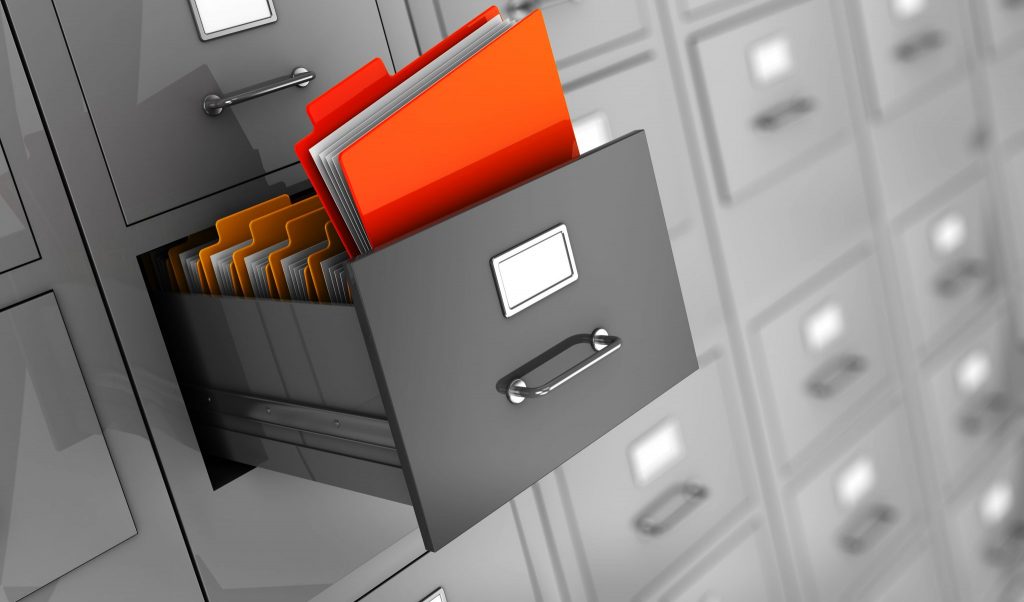If you would like to read the other parts in this article series please go to:
- Exchange Archiving: On-Premises vs Cloud-Based (Part 1)
- Exchange Archiving: On-Premises vs Cloud-Based (Part 3)
- Exchange Archiving: On-Premises vs Cloud-Based (Part 4)
- Exchange Archiving: On-Premises vs Cloud-Based (Part 5)
Solution Topology
For the purpose of writing this article, I used the following hybrid environment (on-premises server + Office 365):

Figure 1: Solution topology used in this article
| Server Name | Role | Software |
| W2K12-DC-01 | Domain Controller |
Mailbox Server
CAS Server
Exchange Server 2013 + CU8
Table 1: List of servers
Exchange 2013 In-Place Archiving (On-Premises)
Let’s start with the on-premises part of Exchange archiving. In the following section we’ll cover the following tasks:
- Creating a separate archive database;
- Enabling the personal archive mailbox for specific users;
- Moving personal data to the personal archive;
- Configuring archive and retention policies.
Here are the detailed steps for the above mentioned configuration plan:
- Start by creating a new Exchange mailbox database. Separating the archive database from the “regular” mailbox databases allows us to use different (and cheaper) storage and to configure different backup policies. Using the Exchange Admin Center (EAC), navigate to servers, then select databases and click the plus sign (New).
- On the new database window (Figure 2), type the Mailbox database name, select the Server hosting the database and write the Database file path and Log folder path. Click Save.

Figure 2: New database
- Next, to enable the archive mailbox for a specific user (Maxwell Smart, as depicted in Figure 3), using the EAC navigate to recipients and select mailboxes. Select a mailbox and in the details pane, under In-Place Archive, click Enable (Figure 4).

Figure 3: Mailbox without Personal Archive

Figure 4: Enabling In-Place Archive with the EAC
- In the create in-place archive window (Figure 5), browse to the previously created mailbox database and select it (Figure 6). Click OK twice and wait for the mailbox archive to be provisioned (Figure 7).

Figure 5: Create in-place archive

Figure 6: Select Mailbox Database

Figure 7: Creating the in-place archive mailbox
- We can now confirm, using the Outlook Web App (Figure 8) that the personal archive for user Maxwell Smart is active. Using the EAC and navigating to recipients and then mailboxes, we can edit the properties of the archive by going to action pane and clicking View details, under In-Place Archive (Figure 9).

Figure 8: User mailbox with the Personal Archive enabled

Figure 9: Archive mailbox properties
- Creating the personal on-premises archive can also be accomplished by using Exchange Management Shell (Figure 10) and running the following cmdlet:
Enable-Mailbox “Agent 99” –Archive –ArchiveDatabase “Archive Mailbox DB”

Figure 10: Enabling In-Place Archive with the PowerShell

Figure 11: View of the mailboxes with Archive enabled
Now that we have some users with a personal on-premises archive, we want to start moving data to the archive. This can be done using 3 different methods:
-
- Explicitly by the user, by manually moving messages directly between mailboxes, or using Inbox Rules to automate the process;
- Importing .pst files, either by the end user, or by an administrator using the New-MailboxImportRequest cmdlet or with the help of the PST Capture tool, that allows you to search for PST files on computers in your organization. For more details about this tool, I recommend reading the article Microsoft PST Capture Tool, by Nuno Mota.
- Using archive and retention policies configured centrally by an administrator;
- To illustrate an import from a local .pst file, let’s take our Maxwell Smart example. Notice in Figure 12 that this user has a local .pst called “My Secret Missions Archive”. Since Maxwell Smart already has an on-premises archive, to import this local .pst, right click it and select Close “My Secret Missions Archive”. In Outlook go to FILE, Open & Export and click Import/Export. On the Import and Export Wizard (Figure 13) select Import from another program or file. Click Next.

Figure 12: User mailbox with local .pst file

Figure 13: Import and Export Wizard
- On the Import a File window (Figure 14), select Outlook Data File (.pst) and click Next. On the Import Outlook Data File window (Figure 15), browse to the location of the .pst file, select it and click Next.

Figure 14: Import a File

Figure 15: Import Outlook Data File
- Select the top root folder of the .pst file, make sure that Include Subfolders is checked and then, from the Import items into the same folder in: dropdown box, select the Online Archive (Figure 16). Click Finish. As you can see in Figure 17, all the content of the .pst file is now on the personal online archive.

Figure 16: Import Outlook Data File

Figure 17: Maxwell Smart mailbox
After illustrating a manual method of moving messages, let’s take a look on how to play with archive and retention policies. In Exchange 2013, you can apply archive policies to a mailbox to automatically move messages from a user’s primary mailbox to the archive mailbox after a specified period. Archive policies are implemented by creating retention tags that use the Move to Archive retention action. Messages are moved to a folder in the archive mailbox that has the same name as the source folder in the primary mailbox.
Exchange 2013 Setup creates a default archive and retention policy named Default MRM Policy (Figure 18). This policy contains retention tags that have the Move to Archive action, as shown in the following table.
|
Retention tag name |
Tag type |
Description |
| Default 2 year move to archive | Default (DPT) | Messages are automatically moved to the archive mailbox after two years. Applies to items in the entire mailbox that don’t have a retention tag applied explicitly or inherited from the folder. |
| Personal 1 year move to archive | Personal | Messages are automatically moved to the archive mailbox after one year. |
| Personal 5 year move to archive | Personal | Messages are automatically moved to the archive mailbox after five years. |
| Personal never move to archive | Personal | Messages are never moved to the archive mailbox. |
| Recoverable Items 14 days move to archive | Recoverable Items Folder | Messages are moved from the Recoverable Items folder of the user’s primary mailbox to the Recoverable Items folder of the archive mailbox. Users attempting to recover deleted items in the archive must use the Recover Deleted Items feature on the archive mailbox. |
Table 2: Default MRM Policy

Figure 18: Default MRM Policy
- In this example, we’ll modify the Default MRM Policy by creating a new retention tag. Open Exchange Admin Center and navigate to compliance management, retention tags (Figure 19). Click the plus sign and select applied automatically to entire mailbox (default).
- On the new tag window (Figure 20), give it a Name, check Move to Archive and define the Retention period (180 days in this example). Click save and then click ok (Figure 21).

Figure 19: Retention tags

Figure 20: New tag

Figure 21: Select retention tags
- Navigate to compliance management, retention policies and edit the Default MRM Policy. Click the plus sign to add the previously created retention tag (Figure 22). In this example we also removed the Default 2 year move to archive.
- We can now use Exchange Management Shell (Figure 23) to confirm the new retention tag is being applied:
Get-RetentionPolicyTag “Default 2 year move to archive” | Format-List

Figure 22: Default MRM Policy

Figure 23: Get-RetentionTagPolicy
According to this archive and retention policy, every item older than 6 months (180 days) will automatically be moved to the personal archive.
Summary
Giving that the necessary hardware is already available and ready to use, configuring on-premises In-Place Archiving can be done in minutes. Planning for the necessary archiving and retention policies will definitely take longer than that, but once configured, there’s little or no maintenance at all.
Getting rid of the .pst files that spread across every network location can be a little tricky, but fortunately Microsoft provides the PST Capture tool, that can be used to automate the process.
In the next part of this article we’ll start covering the cloud-based archive service, provided by Office 365, which requires the configuration of Exchange Hybrid.
If you would like to read the other parts in this article series please go to:



